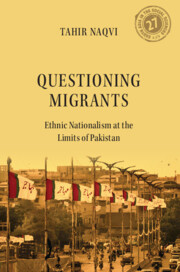1 - Regulating the Unthinkable: Violence, Migration, and the Making of the State
Published online by Cambridge University Press: 13 November 2024
Summary
This chapter examines the production of the Muslim “evacuee,” whose representation at the time of Partition prompted Pakistan's earliest use of official emergency powers to resolve what came to be known among the region's political and technocratic elite as the “refugee problem.” Official representations framed evacuation as a crisis phenomenon in need of resolution while simultaneously casting the Muslim evacuee as a certain kind of national subject, one whose unexpected arrival and need for care acquired the status of an existential imperative for the state in ways that shaped its authority (Naqvi 2007). They provide an illustration of how mass migration and mass migrants came to be conceived through a largely responsive process of political signification, one that refashioned colonial technologies and Muslim nationalist ideals to meet unprecedented situations. I discuss how this gave shape to a finite political language of exceptions, means, and ends that engendered the Pakistani state as a body positioned above the Muslim-majority provinces. Such maneuvers, I maintain, were part of a transnational and translational political process of official commensuration with mass violence, in which the end of the official transfer of population came to be equated with the end of violence. In the narratives that follow, I describe how the “refugee problem” gave rise to logics of official problematization that engendered the federal state as an entity capable of regulating life and deciding on exceptions. Part of this narrative of problematization included the creation of new, regionally defined distinctions between Muslim migrants originating from “agreed” or ‘non-agreed” areas within the newly independent India to Pakistan, whose future was closely debated in the catastrophic wake of decolonization.
Further aspects of the topography, scale, and effects of Partition's chain of violence and displacement should be outlined at this point. The earliest migrations were prompted by outbreaks of communal violence in the Punjab and sections of Delhi in the weeks before independence and persisted until the early spring of 1948. During this period, approximately 7 million refugees crossed the eastern and western borders between India and Pakistan (Ashraf 1949: 24).
- Type
- Chapter
- Information
- Questioning MigrantsEthnic Nationalism at the Limits of Pakistan, pp. 33 - 47Publisher: Cambridge University PressPrint publication year: 2025

